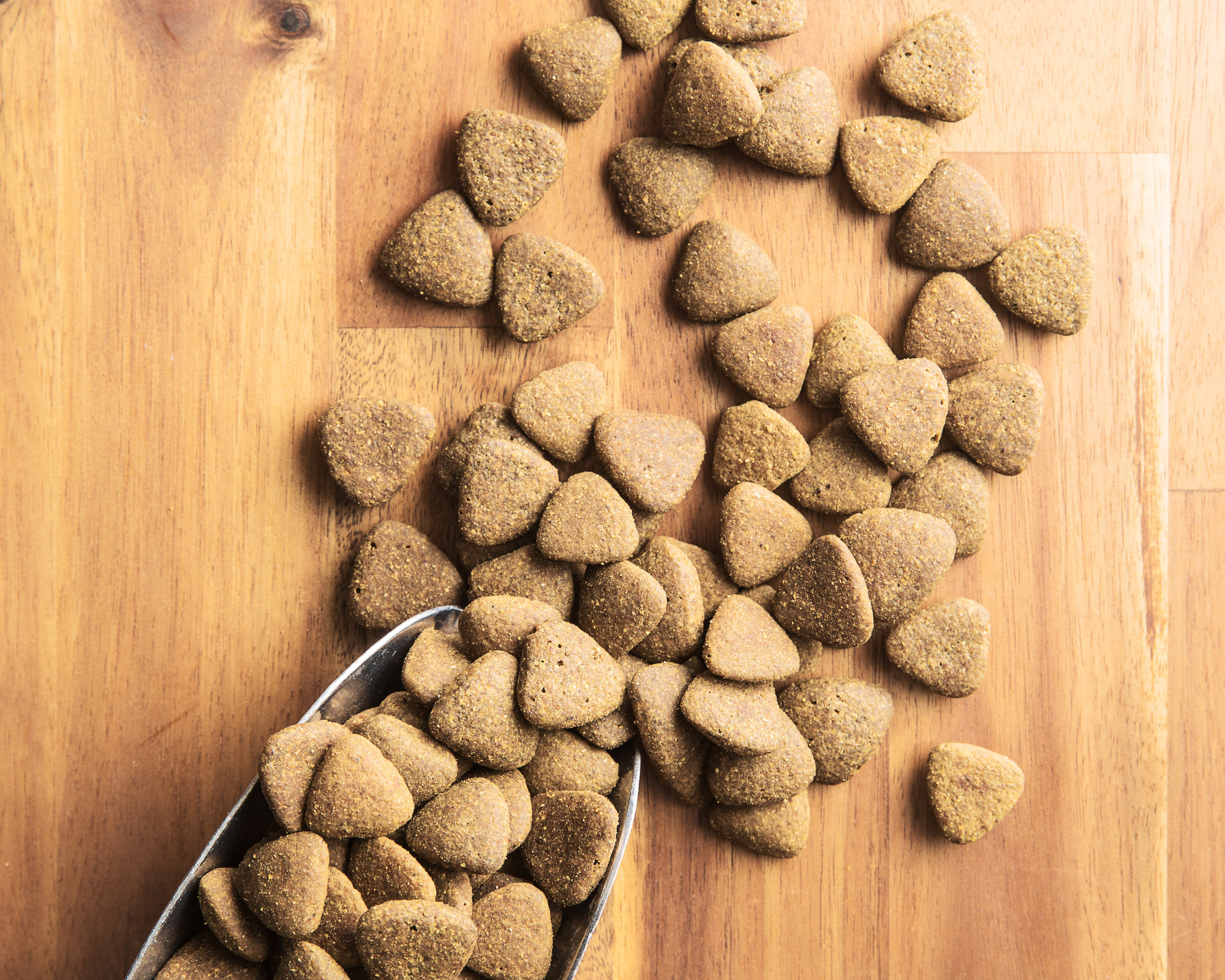

Kibble, Raw, or Fresh: Which Diet Fits Your Giant Breed?
When it comes to feeding your giant breed, one of the most common questions is what type of food is best? With options ranging from kibble to raw to fresh diets, it can feel like there’s no clear answer. The truth is, each approach has its pros and cons, and the right choice depends on your dog’s needs and your lifestyle.
Kibble: Common but Heavily Processed
Kibble is the most common choice for big dogs—but it comes with drawbacks. Traditional kibble is made through a high‑heat extrusion process that can destroy nutrients and requires chemical additives to preserve shelf life. Many kibbles also contain processed fillers, artificial colors, or flavors that aren’t optimal for long‑term health.
If you do choose kibble, look for:
- Real meat as the first ingredient
- At least 28% protein content
- Formulations specific to your dog’s age and size
- Minimal or no fillers, no artificial colors, and no unnecessary preservatives
There are also air‑dried or freeze‑dried options on the market. These preserve nutrients without the same high‑heat processing, making them a better alternative to traditional kibble.
Raw: Natural but Risky
Raw feeding is appealing to owners who want to mimic a “natural” canine diet. Done correctly, it can provide high protein, digestibility, and variety. There are some studies that show that raw-fed dogs often have lower inflammatory markers, better gut health, and a reduced likelihood of disease. However, raw diets require more knowledge and diligence to be done correctly. Without careful planning, there’s a risk of vitamin toxicity or missing key nutrients altogether. Food safety is another concern—especially in households with children or immunocompromised family members. If you choose to feed raw, do your homework: know the sources of the meats, ensure safe handling, and understand the additional vitamins and minerals needed to achieve a complete and balanced diet.
Fresh/Gently Cooked: Whole Food Nutrition
Fresh or gently cooked diets use real meats, vegetables, and added vitamins and minerals. They often provide excellent digestibility and palatability—many dogs who are picky with kibble thrive on fresh food. These diets are typically less processed, which means nutrients are preserved more effectively and meals look and taste closer to real food. Many owners report improvements in coat quality, energy levels, and even digestive health when switching to fresh diets.
The challenges are cost, storage, and preparation. Most fresh diets require refrigeration or freezer space, and they can be more expensive than kibble. Owners also need to ensure the diet is formulated to be complete and balanced, whether through a commercial fresh food brand or a veterinary‑approved recipe. Despite the extra effort, gently cooked meals can be an excellent option for giant breeds who benefit from nutrient‑dense, highly palatable foods that support long‑term health.
Making the Best Choice for Your Dog
What we know for sure: there’s no one-size-fits-all answer. The best diet is the one that keeps your dog healthy, energetic, and excited for mealtime—while fitting into your family’s routine and your vet's recommendations. No matter which path you choose, you can always improve the quality by:
- Choosing foods with high-quality protein and balanced minerals
- Avoiding unnecessary fillers
- Paying attention to additives and portion sizes
- Supporting their diet with targeted supplements when needed
At the end of the day, what matters most is consistency, balance, and how your dog thrives on their food. A happy, healthy big dog at mealtime is the best sign you’ve found the right fit.
